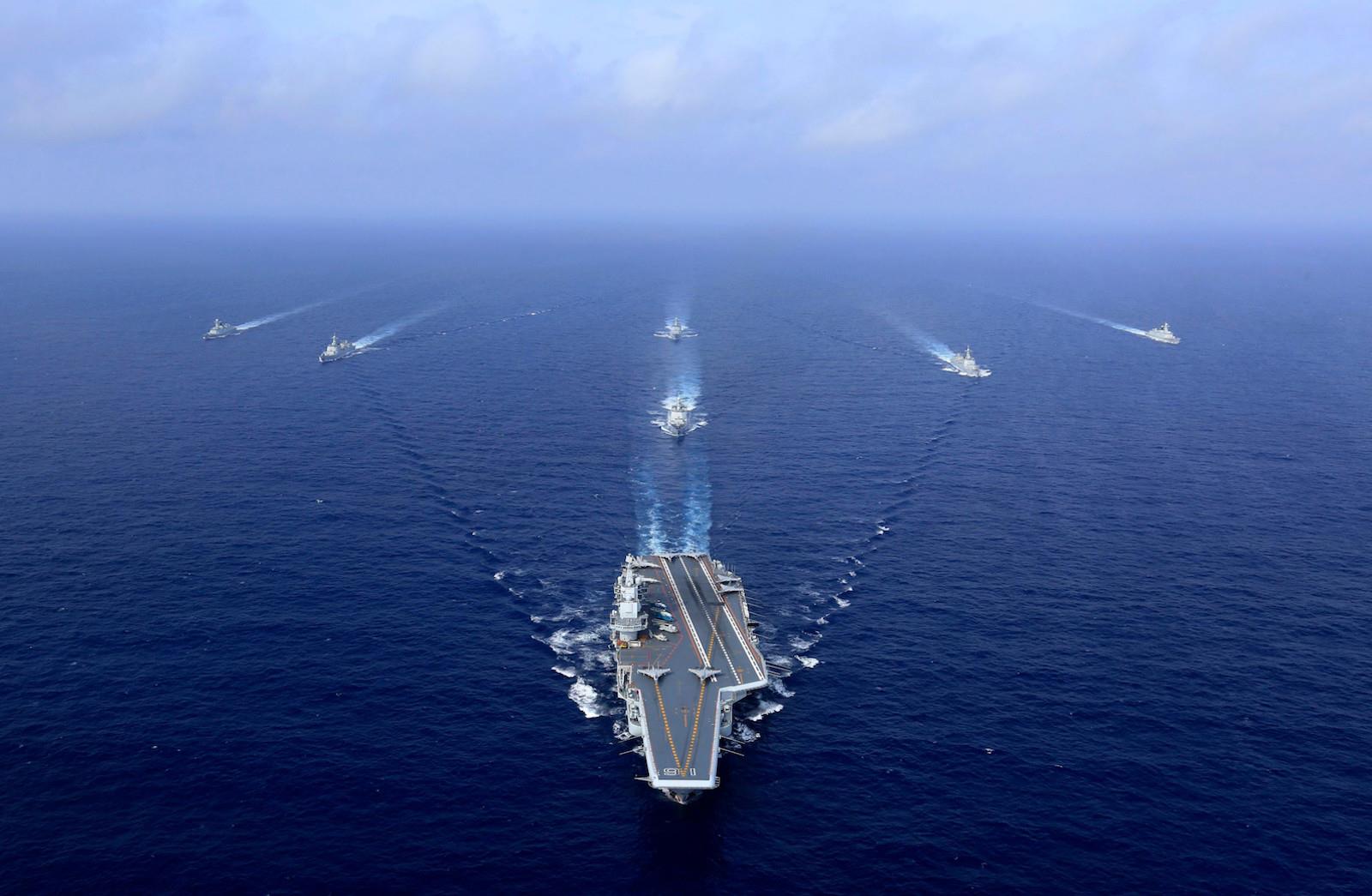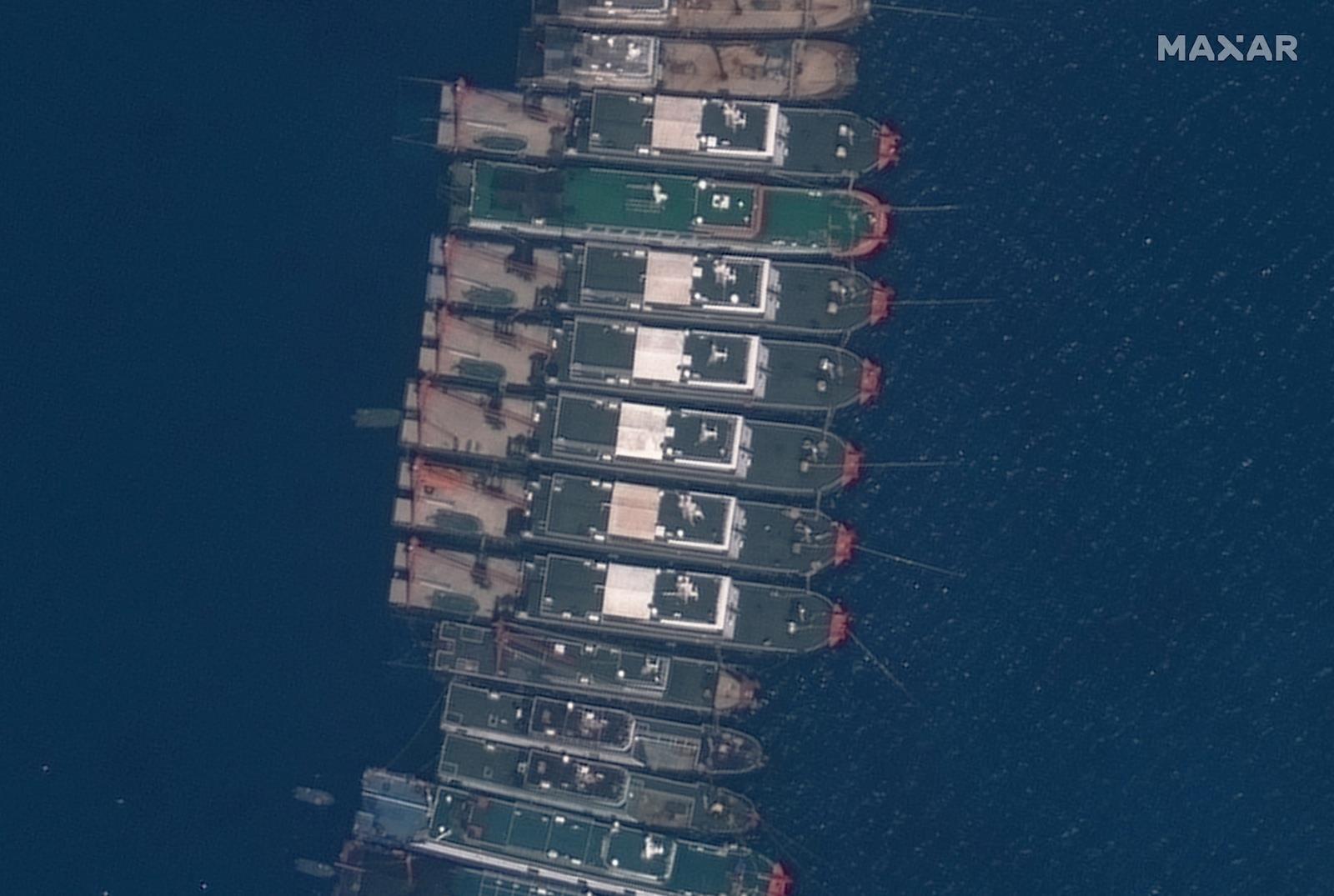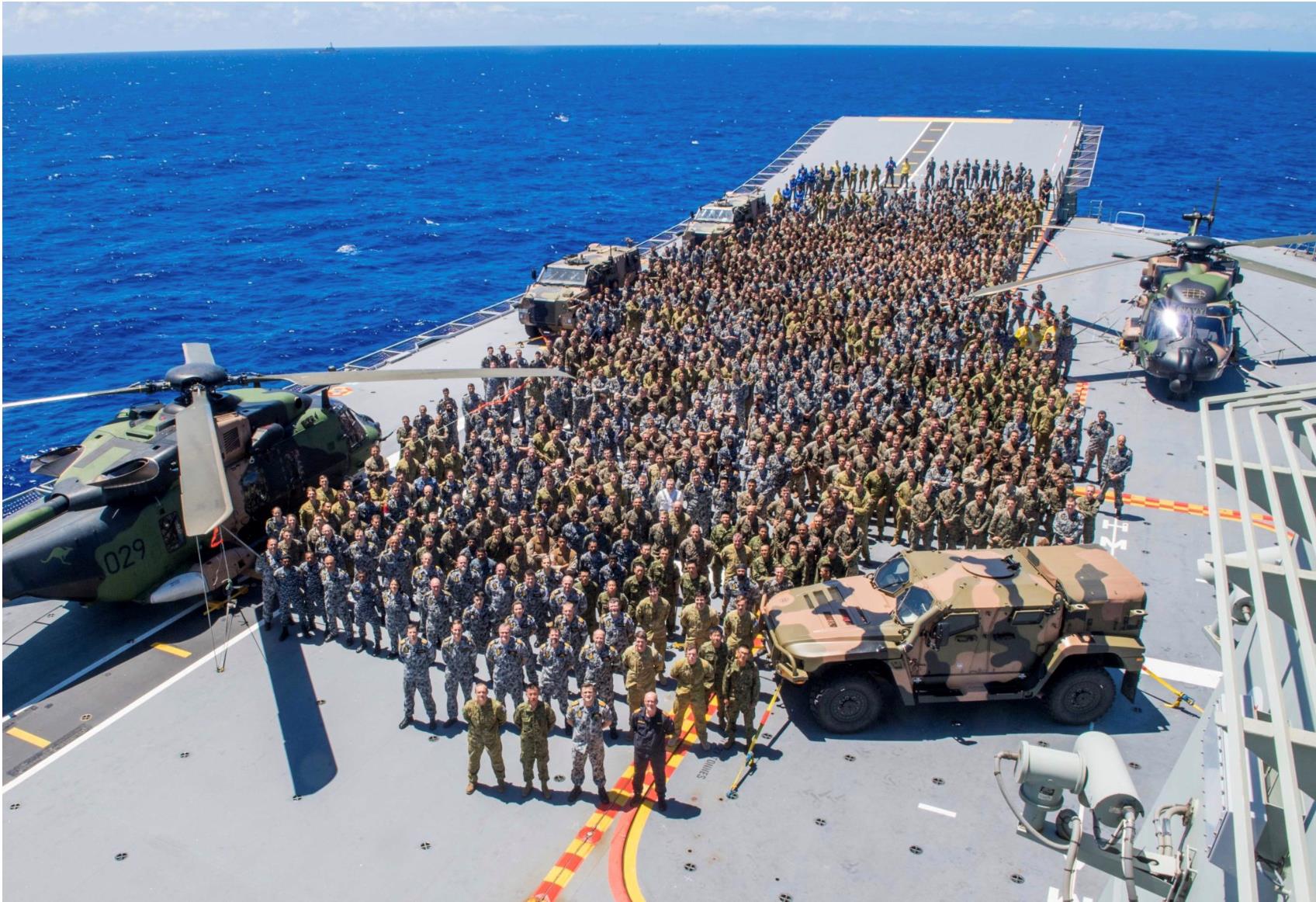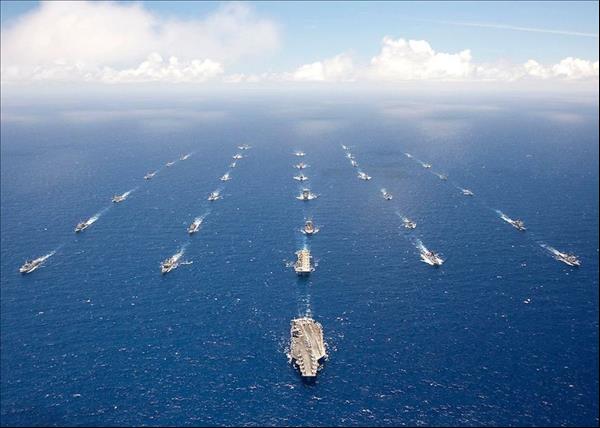
World's Largest Joint Naval Exercise A Message To China
MANILA – Just weeks after US President Joe Biden's maiden visit to Asia, China is testing the resolve of newly elected leaders among US allies in contested maritime waters.
Over the weekend, Australia's Defense Department accused China of intercepting its surveillance missions in the South China Sea, which“resulted in a dangerous maneuver which posed a safety threat to the P-8 [surveillance] aircraft and its crew.” New Australian Prime Minister Anthony Albanese said his administration was deeply“concerned about this incident.”
Meanwhile, newly-elected Philippine President Ferdinand Marcos Jr has signaled a more assertive stance towards China amid rising tensions in the maritime area. In his first major speeches since winning last month's presidential election, Marcos Jr has underscored his commitment to uphold ing the 2016 arbitral tribunal ruling in favor of the Philippines against China over claims to the South China Sea while vowing not to compromise the country's“sacred” rights in the disputed waters.
Now, in a clear show of support for regional allies, the US is set to host“the world's largest international maritime exercise” later this month. Both Australia and the Philippines will join two dozen other nations for the massive biennial Rim of the Pacific (RIMPAC) naval exercises, scheduled for between June 29 to August 4 in Pacific waters reaching from the Hawaiian Islands all the way to southern California.
Maritime tensions in the region have entered a perilous new stage. US Indo-Pacific commander Admiral John C Aquilino warned earlier this year that China has already fully“militarized” a host of disputed land features in the South China Sea, arming them with laser and jamming equipment, fighter jets, and anti-ship and anti-aircraft missile systems.
China is also rapidly consolidating a large network of military bases across adjacent waters, paving the way for the imposition of an Air Defense Identification Zone (ADIZ) over the area. China has also recently been expanding its naval exercises as well as para-military deployments across the South China Sea and other contested waters in the Indo-Pacific.
Threats to freedom of navigation and overflight have followed accordingly. For example, a recent dramatic video showed a Cathay Pacific passenger aircraft“narrowly escaping being hit by a missile” amid Chinese naval drills in the South China Sea.
According to a report by the Eurasian Times , the civilian aircraft plane was flying over the disputed waters when its pilot received an emergency alert by the Air Traffic Control (ATC) to“turn left 90 degrees immediately” to avoid being hit by a People's Liberation Army Navy (PLA-N) missile.

China's Liaoning aircraft carrier during a drill in the South China Sea on April 18, 2018. Photo: AFP / Getty Images
At the same time, China is taking the fight to US allies. In late May, a PLA fighter jet reportedly intercepted The Royal Australian Air Force P-8 maritime surveillance aircraft during the latter's“routine maritime surveillance activity” in international airspace.
The Australian defense department maintained that its surveillance missions are“in accordance with international law, exercising the right to freedom of navigation and overflight in international waters and airspace.”
According to Australian Defense Minister Richard Marles, the Chinese jet flew dangerously close to the RAAF aircraft and then released a“bundle of chaff” containing tiny pieces of aluminum, which were absorbed by the Australian surveillance aircraft's engine.
“Quite obviously this is very dangerous,” Marles told local media.
During a visit to Perth, Australia's westernmost major city, Prime Minister Albanese told reporters that his government has relayed its concerns“through appropriate channels” to Beijing. The incident came on the back of a series of incidents between the two countries.
In May, Canberra accused Beijing of deploying an intelligence-gathering vessel 50 nautical miles from a sensitive Australian defense facility. In February, Australia complained about a PLA navy vessel pointing laser at one of its maritime patrol aircraft.
The Philippines, another US treaty ally, has accused China of deploying para-military forces to Manila-claimed land features in the South China Sea. Last week, the Philippine Department of Foreign Affairs said it was also reviewing reports on the“presence of foreign coast guard vessels around Reed Bank”, a disputed feature that falls within the Philippines' exclusive economic zone (EEZ).
Back in 2019, a suspected Chinese militia vessel sank a Filipino fishing vessel, which almost drowned its crew members in the resource-rich waters.

This handout satellite imagery taken on March 23, 2021 and received on March 25 from Maxar Technologies shows Chinese vessels anchored at the Whitsun Reef, around 320 kilometers west of Bataraza in Palawan in the South China Sea. Photo: Handout / Satellite image ©2021 Maxar Technologies / AFP
The Philippines has recently filed a diplomatic against Beijing's“unilateral imposition of a three-and-half-month fishing moratorium” near the disputed Spratly group of islands. In response, the US State Department reiterated Washington's support for its Southeast Asian ally.
“[China's] unilateral fishing moratorium in the South China Sea is inconsistent with the 2016 Arbitral Tribunal ruling and international law,” State Department spokesman Ned Price said over Twitter.“We call upon [China] to abide by its obligations under international law.” Vietnam has also protested China's unilateral ban.
Earlier this year, the Philippines and US conducted their largest bilateral Balikatan (Shoulder to Shoulder) exercises in recent memory, with more than 5,000 US military personnel joining their Filipino counterparts for a wide range of joint military drills. This year, the two allies are expected to conduct more than 300 joint defense activities as pro-Beijing Philippine President Rodrigo Duterte steps down from office.
Later this month, the Philippines is set to join Australia and 24 other like-minded nations for the 28th edition of the RIMPAC exercises. Among other participants are Brunei, Canada, Chile, Colombia, Denmark, Ecuador, France, Germany, India, Indonesia, Israel, Japan, Malaysia, Mexico, Netherlands, New Zealand, Peru, South Korea, Singapore, Sri Lanka, Thailand, Tonga, the United Kingdom and the United States.
In 2018, the US disinvited China from the exercises amid concerns about Beijing's rising assertiveness in the South China Sea, moves that the US Pentagon said were“inconsistent with the spirit of the exercise.”
China apparently sees the drills as a direct threat, particularly in regard to the nature of Japan's participation.
The Chinese Communist Party-affiliated Global Times said in a June 3 commentary that Japan reportedly plans to send its recently converted aircraft carrier Izumo to participate in RIMPAC, which unlike previous deployments will allow F-35B fighter jets to operate from it.
The commentary said this shows Japan is violating its pacifist constitution and that it has“found itself an excuse for overseas deployment by following the US to manipulate issues like regional security.”
The month-long drills will be hosted by the commander of the US Pacific Fleet and led by the commander of the US Third Fleet under a Combined Task Force (CTF) commander.
Royal Canadian Navy Rear Admiral Christopher Robinson will serve as deputy commander of the Combined Task Force (CTF) while Japanese Maritime Self-Defense Force Rear Admiral Toshiyuki Hirata will serve as vice commander.

Military members from the Royal Australian Navy, Australian army, U.S. Marines, Sri Lankan navy and marines, Royal Malaysian Army, His Majesty's Armed Forces of Brunei, the Japan Ground Self-Defense Force and the New Zealand army gather for a group photo on the flight deck of the landing helicopter dock ship HMAS Adelaide during a previous RIMPAC. Photo: US Navy/Mass Communication Specialist 2nd Class Kelsey J Hockenberger
As many as 25,000 personnel, 38 surface ships, four submarines and more than 170 aircraft are expected to participate in the RIMPAC 2022 under the theme“Capable, Adaptive, Partners.”
The joint forces are expected to engage in a wide range of drills, including anti-submarine and air defense exercises as well as amphibious operations and counter-piracy operations, to enhance interoperability and joint responses to threats to peace and security in the Indo-Pacific.
“As the world's largest international maritime exercise, RIMPAC provides a unique training opportunity designed to foster and sustain cooperative relationships that are critical to ensuring the safety of sea lanes and security on the world's interconnected oceans,” the US Navy said in a statement.
Follow Richard Javad Heydarian on Twitter at @richeydarian

Legal Disclaimer:
MENAFN provides the
information “as is” without warranty of any kind. We do not accept
any responsibility or liability for the accuracy, content, images,
videos, licenses, completeness, legality, or reliability of the information
contained in this article. If you have any complaints or copyright
issues related to this article, kindly contact the provider above.

















Comments
No comment